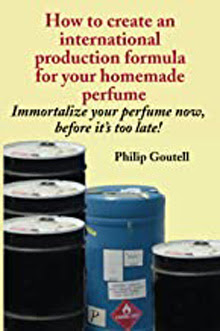The color doesn't have to be what it is
It doesn't matter whether you're making perfume by the drum or by the quart, your perfume is going to have a color. Its color will depend on the ingredients used to make it. If you want your perfume to be a particular color, you're going to have to plan for this color in developing your formula.
Perfumes I've made generally come out in shades from light golden to deep amber. I've always been fascinated by the colors produced by the ingredients that were selected to achieve the scent. I've been happy to live with the "natural" color the ingredients produce. I haven't planned colors for my own fragrances, but this can be done.
There are several ways you can color your perfume, some more professional than others. The simplest down and dirty method is to use food colorings from the supermarket. This is fine if you're just making a few bottles of your perfume for family and friends. These food colorings are harmless. In the short term they won't do anything bad but long term stability could be a problem. Your food colorings could, over time, change in color thus changing the color of your perfume. And, as they change, they could change the scent itself. So if sales are your goal, food colorings are out. This leaves two methods of coloring your perfume. I'll start with the method you are unlikely to use.
Synthetic aroma molecules tend to be colorless. If you have created your formula with these colorless molecules, certified coloring materials you can make your perfume whatever color you want it to be. Your formula could also make use of specialty essential oils that have been decolorized.
This approach to controlling the color of your perfume requires (1) a great deal of skill in perfumery and (2) access to the required materials. Lacking these resources, your best bet is to work with cosmetic grade colorants and, experimenting bit by bit, try to find an approximation of the color you want.
It's likely you will have better luck going for a darker color than trying to dress your perfume out in a light color. It's a lot like working with new paint over a dark patch of existing paint. Getting the repaint to be white or light yellow will be a struggle.
Stability will still be an issue. Will the color you have given your fragrance still be the same in a month... in three months... in a year? You will have to test.
As for myself, I'll stick with those shades from light golden to deep amber. Note that the percentage of alcohol used in your fragrance will affect the color. Alcohol, being clear, will lighten your oil. Using more alcohol will produce a lighter shade. But you're still likely to end up with a color between light golden and, perhaps, a slightly less deep amber.
When you start to mess with color for your perfumes, you'll quickly gain an appreciation for what the skilled professional can do and which you can only approximate. But, if you want to give coloring a try, here are some available resources.


No comments:
Post a Comment